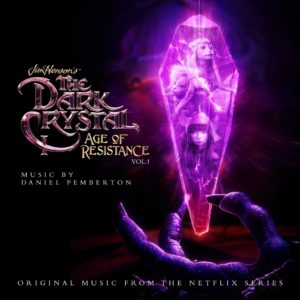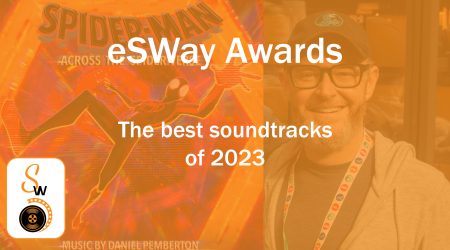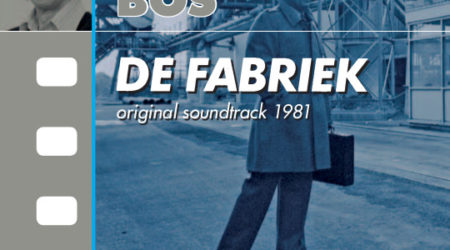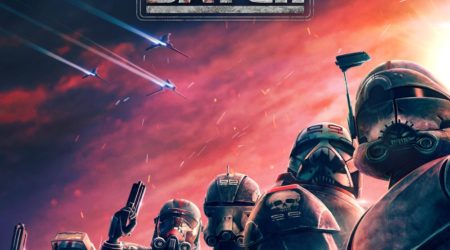
The Dark Crystal is a movie I have heard a lot about but I had never taken the time to actually see it. I know the score, written by Trevor Jones, very well, especially its melodic and beautiful main theme. To my surprise, a prequel television series on Netflix was announced, titled: The Dark Crystal: Age of Resistance. The first thing that crossed my mind was a little flash of hope that Trevor Jones would again be composing the music, but when I found out that the job had been given to Daniel Pemberton I was not disappointed, having gotten to know Pemberton’s skill and reputation over the last couple of years. I have met and talked to both Trevor Jones and Daniel Pemberton during the same edition of Fimucité, and it made me wonder if they were both aware of the new show at the time, if they knew who would be doing the music for it, and if they had talked about it with each other. It would have been a great interview question.
Two albums were released digitally with the music for the new show, being Volume 1, which only contains music from Pemberton and Volume 2, with additional music composed not only by Daniel Pemberton but also by Samuel Sim. I will only go into detail on the first volume. Once you have read my review and listened to the album yourself, you should be able to form a good opinion about whether you want to explore the second volume.
When the series became available on Netflix, it was time to finally watch the movie, to binge the series and to pay attention to its score. The first thing I noticed were the similarities between the movie and the episodes of the television show. For the newly produced show I was expecting high-quality CGI, but it had the same amazing puppetry as they had used in the movie. Another similarity was the strong musical focus on a main theme, which can be heard in full in the first track “The Dark Crystal: Age of Resistance.” The theme is quite long and can be divided into two layers. The first is the foundation layer that can be heard right at the start of the cue, with a pattern going up and down all done by medieval instruments. The flute stood out to me in particular, highlighting every jump in the pattern. After some development of the foundation layer, the second layer with the melody sets in on top of the foundation. The melody consists of beautiful long lines that bring me back to Pemberton’s King Arthur score but without the grunts and screams. In addition to these gorgeous lines, Pemberton added a pattern, played by the strings, going up and down very quickly, which blends perfectly with the rest of the theme.
The theme keeps reappearing in some form in almost every track on the album. The theme consists of different parts and as a result these can all be used in combination with each other or played separately. In “Rian + Mira Dreamfast” the flute is very prominent in the foundation pattern, and it takes a long while before we even start to hear the main melody coming in.
The series has a lot of dark moments, as can be heard in tracks like “The Crystal Chamber” and “Essence Draining” and, while the theme by itself is not extremely dark, it is possible to adapt it to make it sound eerie and sinister. This can be heard in the amazing track “What Lies At The Dream’s End,” where the foundation layer consists of a dark, sinister rhythm of chords while the melody is laid over it, and, when the brass section joins in, you can really hear the despair in the music. In contrast to that, you can hear the same theme in the next track “Together We Fight,” where it sounds more like the original theme, but with the inclusion of percussion, giving the track a “we need to move on” feeling, and I can hear more heroism and hope in the music. These are a couple of examples of how the main theme is used in this score. If you listen to the album carefully you will find more amazing adaptations of this theme.
Next to the main theme there is a beautiful melody on the album, which I call the ‘Aughra’ theme. This can be heard in “Aughra Awakes,” where the melody is first played fantastically by a flute supported by a harp, before the whole orchestra joins in and then finishes with only the flute and harp again. You can also hear this melody in “Another World, Another Time” and in “Aughra Returns / Peeper Beetle Ceremony.”
While exploring the soundtrack I found one additional theme, which I will call the Thra theme. The gorgeous melody of this theme can be heard in “Thra is Calling,” where it is played on a flute, but it can be heard in more detail in “Speak For The Dead,” where it is performed by all kinds of medieval instruments that either support the main melody or play counter melodies, creating a beautiful musical dance. In the series this track is used as support music for a song the main characters sing together. Unfortunately, the song itself cannot be found on the two volumes, which would have been a nice addition. What is a great addition though is “Dzenpo!” a track on the album that really stands on its own. It is fun, medieval-sounding background music for an inn or a tavern. When I listen to it, I imagine little puppets drinking, dancing and having fun.
One thing I have not discussed yet is the old theme from the movie. While the score for the series is mainly new music, it has a handful of hints to Trevor Jones’s theme, as can be heard in “Story of The Dark Crystal,” amidst all kinds of eerie sounds. The most beautiful implementation of the theme can be heard in the last track, “The Dark Crystal: The Age of Hope,” which is filled with all kinds of variations of Pemberton’s theme. During the last couple of seconds, however, the music transitions into a hint of the old theme by Trevor Jones, telling us that the story will go on in the movie, which I think is a brilliant move, and a wonderful gesture to the old movie with its music.
The most amazing thing about this score is how well the implementation is done by having a strong focus on the main theme. Since it can be divided into multiple parts, the possibilities are endless. In addition, each part can be altered in a way to fit the things happening on the screen. Sometimes you need the music to be subtle and delicate, where you can only hear one instrument playing the melody, other times you need a very strong sound, and in that case the same melody is played by a lot of musicians or even a full orchestra to add weight to a scene that needs that emotional impact. In addition, parts of the theme can also be altered to make it sound joyful in one place, yet very sad and dark in another. Using this technique, Daniel Pemberton is able to create a strong musical identity for the show in much the same way as Trevor Jones did for the movie. I hope that at least Daniel Pemberton’s theme, like the movie theme, will be remembered for many decades to come, because in my book it definitely should be.
Listen or buy
- Buy this soundtrack digitally from Amazon.com or iTunes
- Listen to this soundtrack on Spotify
Tracklist
The highlights are in bold.
- The Dark Crystal: The Age of Resistance (3:42)
- Another World, Another Time (3:26)
- Story of the Dark Crystal (3:11)
- Rian + Mira Dreamfast (4:15)
- Aughra Awakes (2:04)
- The Crystal Chamber (3:16)
- Essence Draining (2:46)
- Into the Catacombs (2:09)
- Deet Enters Thra (2:07)
- Dzenpo! (2:55)
- Her Light Faded (2:37)
- What Lies at the Dream’s End (3:18)
- Together We Fight (4:49)
- The Blue Flames Part I (3:52)
- Thra Is Calling (1:41)
- Outcast (1:49)
- The Journey (2:05)
- The Hunter + The Storm (2:34)
- Dreamspace (2:40)
- Speak for the Dead (2:45)
- Aughra Returns / Peeper Beetle Ceremony (2:47)
- The Dark Crystal: The Age of Hope (5:35)
Total length: 1 hour and 6 minutes
Varèse Sarabande (2019)




